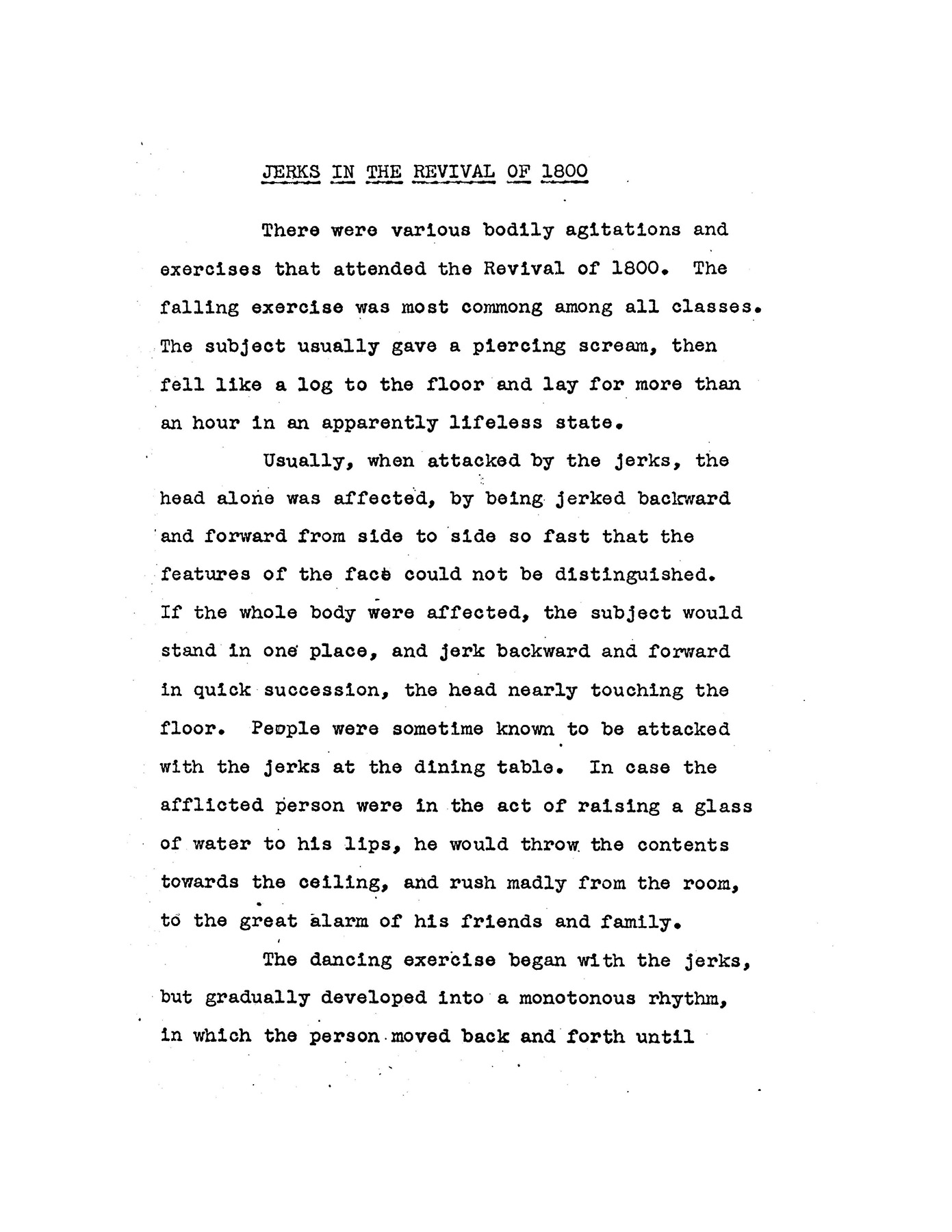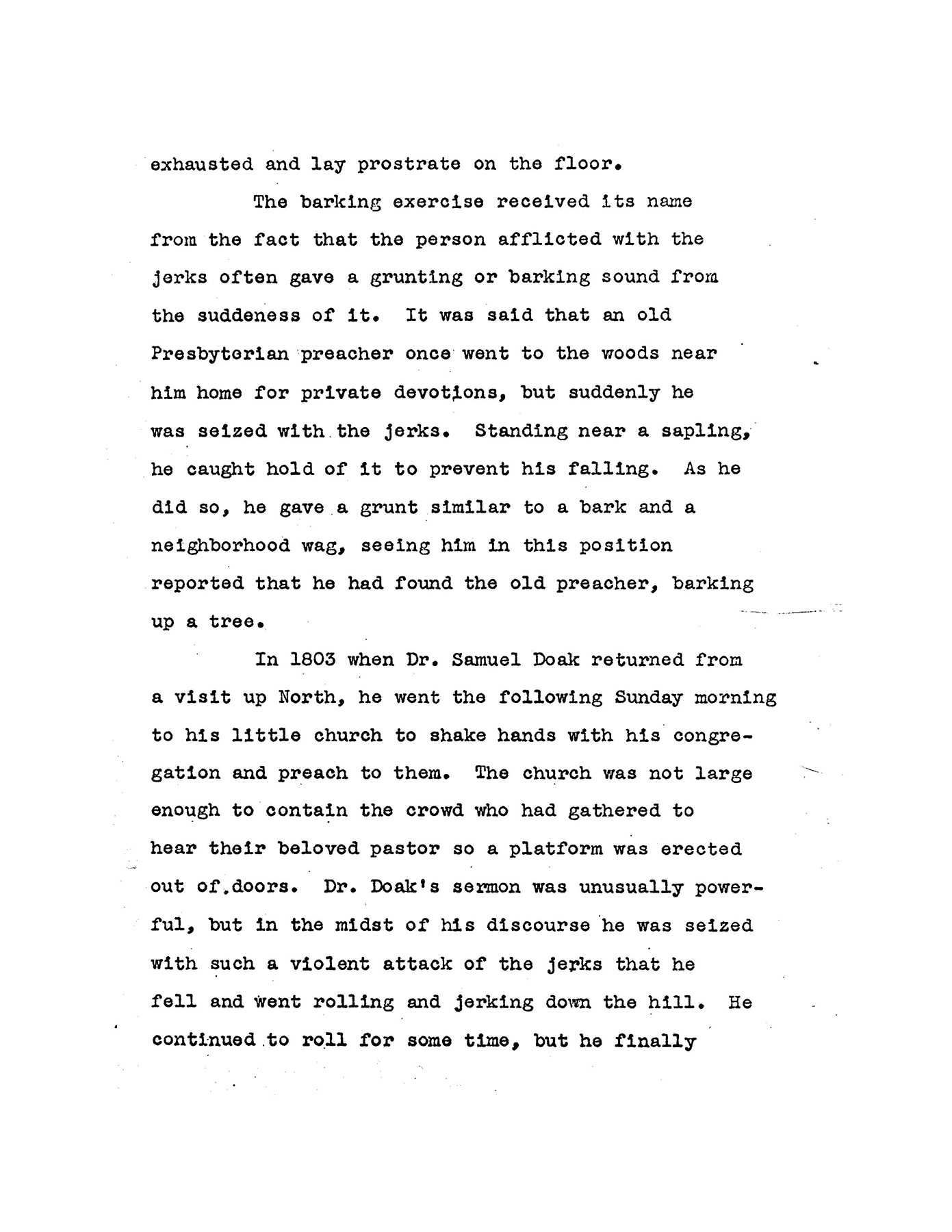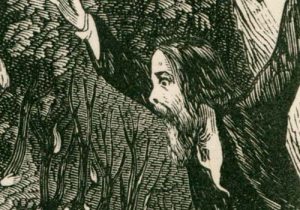This excerpt from a master’s thesis by twentieth-century folklorist Caroline McQueen Rhea includes an intriguing story regarding the “bodily agitations” experienced by Samuel Doak, one of the leading Presbyterian clergymen in east Tennessee during the Great Revival. Other nineteenth-century sources confirm that Doak was a subject of the jerks (click here). This and other sections of Rhea’s thesis (1932) are available online at the Digital Library of Appalachia website.
There were various bodily agitations and exercises that attended the Revival of 1800. The falling exercise was most common among all classes. The subject usually gave a piercing scream, then fell like a log to the floor and lay for more than an hour in an apparently lifeless state.
Usually, when attacked by the jerks, the head alone was affected, by being jerked backward and forward from side to side so fast that the features of the face could not be distinguished. If the whole body were affected, the subject would stand in one place, and jerk backward and forward in quick succession, the head nearly touching the floor. People were sometime known to be attacked with the jerks at the dining table. In case the afflicted person were in the act of raising a glass of water to his lips he would throw the contents towards the ceiling, and rush madly from the room, to the great alarm of his friends and family.
The dancing exercise began with the jerks, but gradually developed into a monotonous rhythm, in which the person-moved back and forth until exhausted and lay prostrate on the floor.
The barking exercise received its name from the fact that the person afflicted with the jerks often gave a grunting or barking sound from the suddeness of it. It was said that an old Presbyterian preacher once went to the woods near him home for private devotions, but suddenly he was seized with the jerks. Standing near a sapling, he caught hold of it to prevent his falling. As he did so, he gave a grunt similar to a bark and a neighborhood wag, seeing him in this position reported that he had found the old preacher, barking up a tree.
In 1803 when Dr. Samuel Doak returned from a visit up North, he went the following Sunday morning to his little church to shake hands with his congregation and pr.each to them. The church was not large enough to contain the crowd who had gathered to hear their beloved pastor so a platform was erected out of doors. Dr. Doak’s sermon was unusually powerful, but in the midst of his discourse he was seized with such a violent attack of the jerks that he fell and went rolling and jerking down the hill. He continued to roll for some time, but he finally grew quiet enough to rise and conclude his sermon though his knees continued to shake.
Told by Dr. Samuel Crawford. of Morristown, a descendant of Samuel Doak.
Source
Caroline McQueen Rhea, “Sketches and Legends of Upper East Tennessee” (master’s thesis, George Peabody College for Teachers, 1932), 172.



